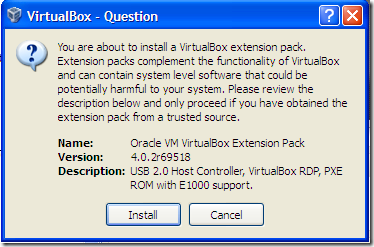

Successfully installed "Oracle VM VirtualBox Extension Pack". Do you agree to these license terms and conditions (y/n)? You will be presented with the Oracle license and prompted to accept the terms and conditions. When the download is completed import the extension pack using the following command: sudo VBoxManage extpack install Oracle_VM_VirtualBox_Extension_Pack-5.2.20.vbox-extpack Before downloading the extension pack using the command below you should check the VirtualBox download pageĭownload the extension pack file by typing: wget The VirtualBox Extension Pack provides several useful functionalities for guest machines such as virtual USB 2.0 and 3.0 devices, support for RDP, images encryption and more.Īt the time of writing this article, the latest version of VirtualBox is 5.2.20. Loaded: loaded (/usr/lib/virtualbox/vboxdrv.sh enabled vendor preset: disabled)Īctive: active (exited) since Thu 21:31:52 UTC 6s ago

The output should look something like this indicating that the service is enabled and active :

To verify that your VirtualBox installation was successful, run the following command which will check the status of the vboxdrv service.

Once the installation is complete you will see the following output: Creating group 'vboxusers'. Install the latest version of VirtualBox 5.2.x by typing: sudo yum install VirtualBox-5.2ĭuring the installation, you will be prompted to import repository the GPG key. Start by downloading the build tools necessary for compiling the vboxdrv kernel module: sudo yum install kernel-devel kernel-devel-$(uname -r) kernel-headers kernel-headers-$(uname -r) make patch gccĭownload the Oracle Linux repo file to /etc/ directory using the following wget command Installing VirtualBox from Oracle repositories #įollow the steps below to install VirtualBox on your CentOS 7 machine: Prerequisites #īefore continuing with this tutorial, make sure you are logged in as a user with sudo privileges In this tutorial, we will show you how to install VirtualBox from the Oracle repositories on CentOS 7 systems. Is an open-source cross-platform virtualization software which allows you to run multiple guest operating systems (virtual machines) simultaneously.


 0 kommentar(er)
0 kommentar(er)
